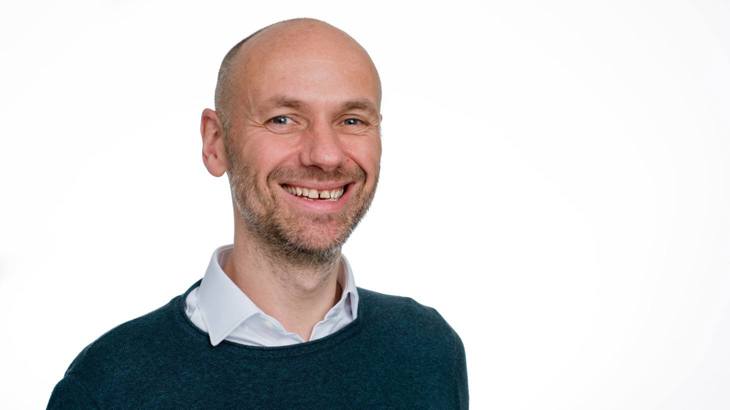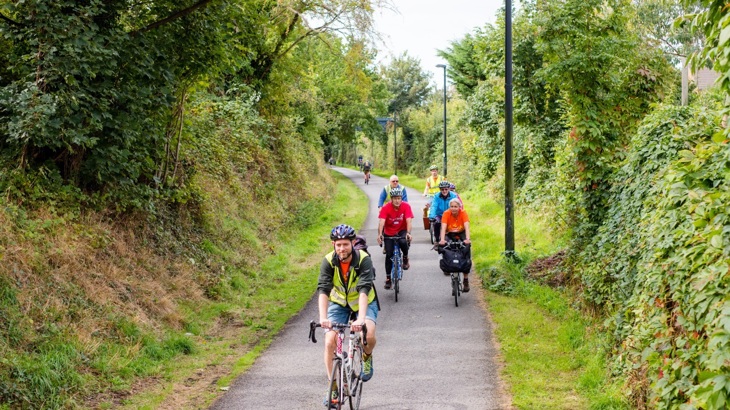With funding from the Department for Transport, we’ve been able to get started on a project to improve a particularly well-used section of the Bristol and Bath Railway Path. The Path is an extremely busy traffic-free route, and conflicts often arise within the BS5 area of Bristol. Some people are even put off using it due to the fear of accidents and collisions.

Here we talk to James Cleeton, Sustrans England Director South, about the project and some of the ideas that are emerging following our community engagement process.
Q: What can you tell us about the purpose of this project?
Through the One Path: BS5 project we want to build on the success of the Bristol and Bath Railway Path while addressing issues that sometimes arise on one of its busiest stretches. In particular, we know that conflicts can happen on the path at the busiest times of day.
We want to ensure that the Path is an inclusive space for everyone. So we’ve been working on the One Path Initiative for about a year, encouraging people to adopt the principles of share, respect and enjoy.
But some physical changes to the path would really help solve some of the issues and make the Path an inclusive space for all.
So we’re working closely with the communities in the local area and with Bristol City Council to redesign a 1.7 mile most-used stretch of the path between Trinity Street and Clay Bottom.
Q: Why is Sustrans spending this money on the Bristol and Bath Railway Path rather than any of the other transport corridors in Bristol?
The Path is a key sustainable transport route in Bristol, as well as a linear park. But we all know that it’s been a victim of its own success. This particular section sees up to 1,800 people using it an hour at peak times. That’s a lot!
And as the Department for Transport funding is specifically to address Paths for Everyone priorities, the Bristol and Bath Railway Path was the prime candidate.
We’d love to see more funding for other travel corridors in Bristol, to improve them for walking and cycling. In fact, having other options for cycling from east Bristol into the centre would alleviate some of the pressure on the Path.
Q: So what has been done so far with this project?
So far, our work has all been about listening to the local communities, and people who already use or want to use the Path.
We wanted to understand what people love about the Path, what people aren’t so keen on, how the communities who use it would describe the issues they’ve come across, and to draw out from them ideas for physical changes that would make the path a more accessible and enjoyable space for everyone.
We’ve spoken to over 250 people, either out on the Path, in community meetings, online or in specific user groups, to learn from them about what they need.
This has included conversations with school communities, disability groups, older people groups, local community organisations, and walking and cycling campaign groups.
From there, we’ve been able to pull together people’s ideas into some emerging design ideas for improvements, which we’ll be presenting back to the community and asking them to refine with us.

We’ve been hearing that from people who walk and cycle on the path alike, as well as from some of the other local and community groups we’ve been talking to.
The conversations we’ve been having have helped us to understand the careful balance that’s needed on the path, between it enabling movement and feeling like a relaxing, enjoyable space.
Naturally, there will always be trade-off between the two, as different people see the path as having different functions.
Our conversations have shown us the importance of balancing those two functions so that we can work towards solutions that reduce the trade-offs.
Q: And what has the community been saying?
It’s clear from all our conversations that Bristol and Bath Railway Path is a much-loved community asset. People really do value it, both as a travel corridor and also as a linear, green park, which they can use to get outside and close to nature.
It does, in fact, fall into Bristol City Council’s portfolio of managed parks, which some people are surprised to hear.
People are definitely aware of the problems the Path’s popularity presents. But most believe it is the behaviour of just a few that causes conflict.
We’ve heard that the excessive speed and close-passing of a handful of the people cycling on the path really does put others off using it. Some parents have even chosen to drive their children to school, instead of using the Path for that reason.

Q: What sorts of design ideas have the community come up with?
We’ve seen a whole range of ideas coming forward. Some people were really keen for us to widen the Path along its length to enable segregation between people walking and people cycling.
However, in many places along the route, there are space limitations and ecological constraints that would mean this wouldn’t be possible. And the calls for segregation certainly haven’t come from the majority.
Others have suggested that we should try to encourage people cycling to find alternative routes on local roads. But the Path represents a much-valued traffic-free space, where people have the confidence to commute longer distances under their own steam, and that’s not something that should be lost.
Listening to everyone’s suggestions has led us to think about options that will enhance the Path as a space for people to enjoy, at the same time as slowing down that handful of people who really do just cycle too fast.
So we’ll be talking to the community about potentially widening sections and some ideas that focus on ‘hotspots’ where there is a lot of complex movement, for example nearer schools, residential streets and junctions.
We want to make those spaces calmer and more enjoyable so that the Path really does become ‘for everyone’ and can deliver the community’s vision.
Q: It all sounds very exciting. What are the next steps?
In the next couple of days, we’re holding more workshops with the community to talk to them about the ideas that have been coming out. We’re going to work with them to refine those design ideas so that we can start to develop some firmer designs.
From there it’ll be a case of working with a stakeholder group on behavioural thinking.
Should we ask people to adopt certain thinking while using the path, for example, everybody keep to the left? Maybe we ask people to ring their bells if they want to overtake.
We will also invite scrutiny of designs from various people who have technical or ‘lived experience’ wisdom to offer. This will help us to further develop the designs for a path that will become ever more inclusive while remaining loved and cherished by the local community.






